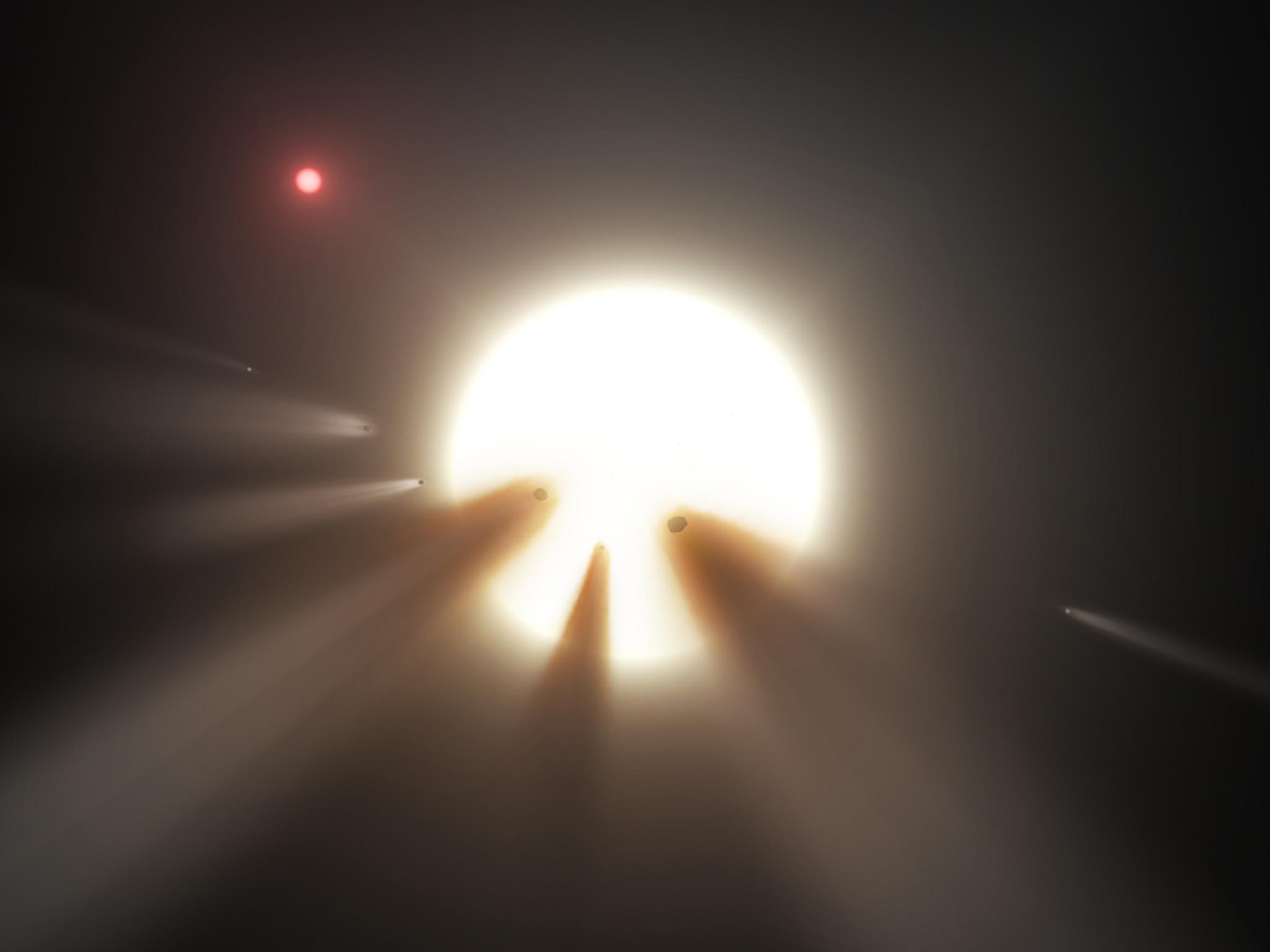'Alien megastructure' star is actually just some dust, major study claims
More than $100,000 was raised by members of the public to understand the truth of the 'most mysterious star in the universe'

A strange star deep in space probably doesn't have a giant alien megastructure wrapped around it, according to new research.
The strange sun – known as Tabby's star – became famous in 2016 when some suggested that its strange behaviour could be explained by aliens building a huge structure around the star. Since then, scientists have been attempting to find whether that was true, or if there is another explanation.
The strange behaviour was noticed when scientists saw that the star seemed to dimming and brightening sporadically, in a way that was like no other seen before and couldn't easily be explained. It led to the star becoming known as the "most mysterious star in the universe".
Now detailed research suggests that it is in fact dust swirling in front of the star that is causing the strange dimming behaviour. That's the conclusion of nearly a year of work that saw scientists look deeply at the light coming from the star.
The research was funded by a crowdfunding campaign off the back of interest in the star. That money was used to watch for the strange dips in the light emerging from it, and study what they looked like.
"They're ancient; we are watching things that happened more than 1,000 years ago," write the authors of the new paper. "They're almost certainly caused by something ordinary, at least on a cosmic scale. And yet that makes them more interesting, not less. But most of all, they're mysterious."
The new data doesn't entirely discount that an alien megastructure or hidden planet is getting in the way. But it provides compelling evidence that it's probably not.
"Dust is most likely the reason why the star's light appears to dim and brighten. The new data shows that different colors of light are being blocked at different intensities. Therefore, whatever is passing between us and the star is not opaque, as would be expected from a planet or alien megastructure," said Tabetha Boyajian, the astronomer who the star has been named after.
The strange behaviour of the star was found by citizen scientists looking through the huge amounts of data being generated by Nasa's Kepler mission to look for new planets. The scientists involved in the new research praised the work of the public in both finding the star and then funding the further research on what exactly was happening.
Join our commenting forum
Join thought-provoking conversations, follow other Independent readers and see their replies
Comments
Bookmark popover
Removed from bookmarks